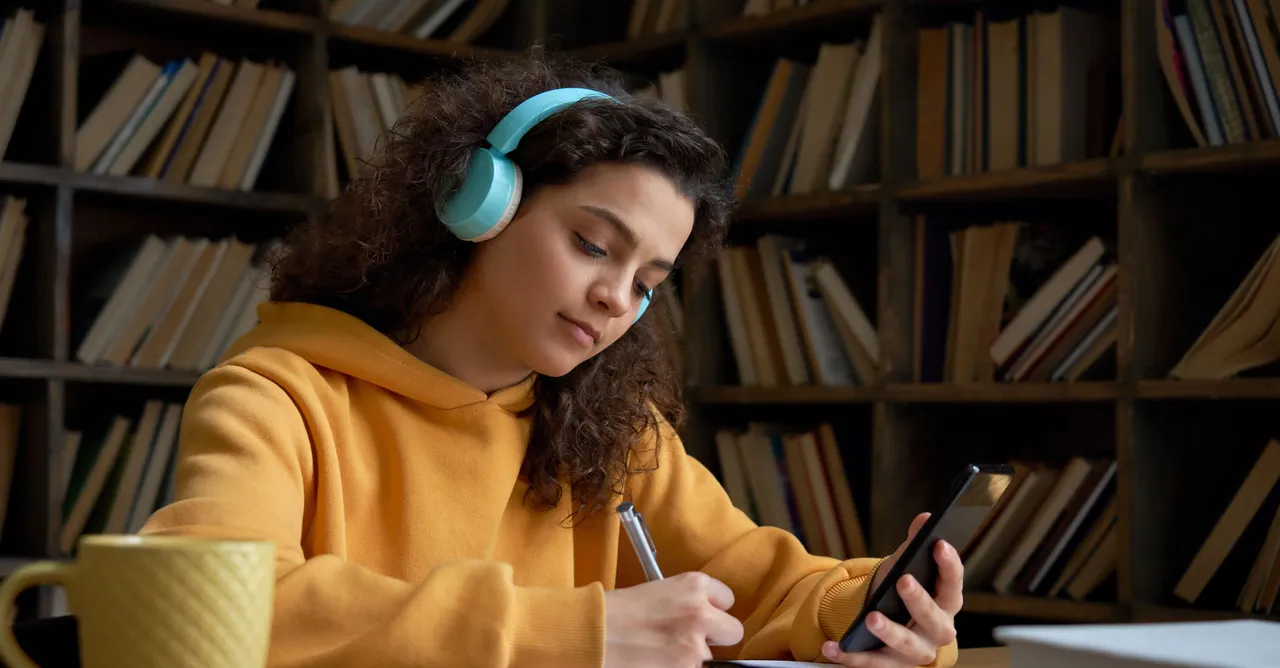Post-lockdown Mobile Learning: Aspirations and Cautions
Before recently, mobile learning was in the background of edtech. A concept established long ago, it has been developing at a steady pace, but didn’t cause ripples in the conservative educational system. M-learning was duly appreciated for its convenience and cost-efficiency, yet in the light of the global concern about using mobile phones in schools, its adoption in the classroom was tentative, sporadic, and mostly reliant on an educator’s initiative.
However, when the pandemic and the ensuing lockdown disrupted the conventional way of educating, things turned around for mobile learning. As teachers in almost two hundred countries were urgently required to readjust the learning process for online delivery without compromising its efficiency, mobile educational apps were rediscovered and quickly became a staple of remote education. Already, Statista reports a visible surge in mobile educational app downloads during the first quarter of 2020 compared to previous years.

Global mobile education app downloads, 2017-2020
Today, the m-learning market is burgeoning, with edtech unicorns making exceptional profits from homeschooling and startups springing up with innovative tools, set to compete with industry leaders for their market share. However, as the pandemic subsides, will mobile retain its importance in the post-lockdown classroom or will it be sidelined by the traditional education once again?
Let’s see whether the pandemic altered the general attitude toward mobile application development for learning purposes, and whether there are omnipresent characteristics of the technology that will facilitate its wider acceptance in educational institutions around the world.
How Mobile Learning Elevates Traditional Education
When moving online became the only viable option for thousands of schools and universities, teachers had to make use of edtech to ensure continuity. Mobile learning, along with conferencing platforms and online LMSs, quickly became indispensable for the reinvented schooling. As m-learning became embedded in the education process deeper than ever before, the technology’s effectiveness for skill and knowledge building, as well as its long-term potential, were duly discovered by a wider audience.
Here is why mobile learning should remain a part of education kits as we emerge from the lockdown.
It Expands the Classroom Experience
Today, education is actively embracing tools and strategies that would supply students with in-depth and hands-on knowledge. Against this backdrop, schools and universities were taking tentative steps toward augmented, virtual and mixed reality, recognizing its unique capacity for ultra-interactive education yet being deterred by its cost. However, as most in-person classes were halted due to the lockdown, mobile AR and VR solutions came to be the best media for hands-on home-based education.
From augmented coloring apps for kindergarten pupils to AR anatomy tools for medical students, all types of mobile apps have been on the uptake in recent months, adopted by educators around the world. Realizing the sector’s struggle to ensure teaching continuity, many e-learning developers voluntarily committed to help, offering free content, extending course libraries, or implementing new features promptly. Apart from this, content authoring apps also started appearing on the AR/VR market, ImagineAR and MetaAR being the prime example. These allow teachers to design educational materials overlaid with 2D and 3D objects without coding.
The COVID-19 pandemic put the educational capacity of AR to the test, and it’s safe to say that the technology proved as viable in an at-home learning environment as in a classroom. As countries emerge from the lockdown, educators who came to appreciate the eye-catching visualizations, sophisticated learning models, and cost-efficiency of AR apps, are likely to continue using them as support tools more often.
Ride the wave of m-learning with Iflexion
It Lets Students Own Their Learning
In the pre-lockdown days, interactive learning was making its way into classrooms all over the globe, favored by teachers for keeping students motivated, attentive, and focused. The pandemic with its social distancing threatened to undermine the active learning tendency, diminishing lessons to one-way lectures. But technology, both educational and general-use, didn’t let that happen. While video conferencing tools allowed teenage and adult learners to easily connect online, educational mobile games became one of the most preferred teaching tools to keep lessons engaging and enjoyable for kindergarten and primary school pupils.
The cases of teachers conducting classes within video games like Assassin’s Creed or Minecraft made headlines but, while admirable and inspiring, they are an exception rather than a rule. By and large, educators relied on dedicated gamification tools for their simplistic, child-centered design, well-crafted learning mechanisms, and rich content creation capabilities. However, only the ones with the most relevant and valuable features saw the greatest upsurge in the number of users and the amount of created content.
One of them is Kahoot!, a popular game-based learning app from Norway. It won universal acclaim amid distance learning because it allows teachers to host live game sessions over a web conferencing tool, promoting teamwork and connecting physically separated classmates
Indian K-12 learning app BYJU’S has also gained traction due to its unprecedented personalization capacities. Its engine driven by machine learning can design individual learning experiences based on each learner’s strengths and weaknesses, keeping students’ progress in check when the teacher can’t assess their performance in person.
Game-based apps have not only allowed teachers to keep education fun and simple during these trying times, but also helped to unobtrusively engage students in learning and encourage them to master new concepts. Impacted by distance learning requirements, some educational game apps became more elaborate and streamlined, enabling students of all ages to study meaningfully with little to no teacher’s participation.
It Mitigates the Digital Divide
The conundrum of the digital divide has been plaguing the education sector ever since tech started gaining foothold in the classrooms. Even though internet penetration rates are steadily growing worldwide and technology is getting cheaper year after year, children from lower-income families tend to lack satisfactory connectivity.
When education shifted online, the depth of this alarming digital gap was revealed as 21% of US parents admitted to Pew Research Center their children couldn’t complete schoolwork since they had no computer in the household, while 22% of them stated they didn’t have reliable internet access at home.

Digital obstacles of remote schooling in the US
In the meantime, the mobile phone ownership rate is much higher globally. In the US alone, more than 90% of children and young adults from varying socioeconomic backgrounds have a cellphone, according to the 2019 Mobile Fact Sheet by Pew Research Center. Although not all of them have the cellular internet connection, one can assume its rate is higher than that of the broadband internet. Aware of this, many countries made sure to launch mobile apps or mobile-responsive platforms for remote learning as schools went into the lockdown, allowing millions of children to keep up with their curriculum.
The success of this unplanned experiment demonstrated that the digital divide can be mitigated by the popularization of mobile learning apps and the adoption of existing edtech resources for mobile devices. In the short run, the mobile delivery model will enable disadvantaged students to participate in the learning process on par with their more well-to-do classmates and even pave the way for the nationwide shift to the remote education model down the line.
It Keeps Higher Education Relevant and Competitive
Higher education institutions have been mitigating the issues of falling enrollments and slipping rankings for a while now. However, after many months of quite efficient online teaching, the very expensive traditional system with its one-way lectures and teacher-centered learning is highly likely to lose its appeal to a large share of current and potential students. Thus, to survive in the post-pandemic market, universities should revamp their value proposition, aligning it with what their students need.
With younger generations keener than ever on digital technologies, mobile learning can become a good competitive advantage for an educational institution. For one thing, the technology can empower students with the flexibility to study on the go at any suitable time, giving them control over their progress. In addition to this, m-learning can substitute the antiquated knowledge delivery models and make education, vocational in particular, more practice-oriented, immersive, and personalized.
Above all, the pivot to mobile learning will help universities curb skyrocketing prices and become more budget-friendly, which is particularly important in the aftermath of the economy-wrecking pandemic. With proliferating mobile apps, the cost of development and maintenance has become more than affordable in recent years. Also, it is easier, cheaper, and more ecologically sustainable to update a mobile app’s content than reprint outdated textbooks and training materials.
Barriers to Ubiquitous M-Learning Adoption
Mobile learning has gained a new importance during the pandemic and holds more potential than ever due to recent technological advancements. Nevertheless, its implementation is still fraught with persisting challenges that may prompt current adopters to give up m-learning when the lockdown ceases.
Risk of Digital Distraction
Mobile phones have an inherent disadvantage — they are very distracting. This is a universal issue that to some extent affects phone owners of all ages, but children and teenagers, who lack adult discipline and self-control, are particularly prone to misusing their devices, especially when they are bored. Constantly diverting their attention away from the lesson and to social media, notifications, and games, a student is half-present and fails to retain information.
In this regard, the introduction of mobile learning in classrooms is highly likely to take its toll on students’ academic performance. As the novelty of educational games and skill-building apps wears off, won’t the student get tempted to let their attention wander, especially when the alluring phone is already in their hand?
There is indeed a high probability of it happening if mobile learning apps are designed conventionally. However, a mobile development company can take respective measures throughout the software creation lifecycle to make it resilient to learners’ distraction. For one thing, educational content should be structured in bite-size chunks for immediate comprehension and be as interactive as possible to keep students engaged. It is also vital to get rid of any unrelated elements, from ads to decorative frills, to avoid overwhelming the user.
Lack of Adjusted Teaching Practices
Educators’ insufficient competence in handling mobile-first courses is another stumbling block on the way toward full-scale m-learning integration. Even though more and more teachers are recognizing the potential of mobile, their training as a rule does not provide a satisfactory pedagogical framework on how to properly use mobile apps and solutions in a classroom. As a result, only the more tech-savvy or determined teachers explore m-learning and by trial and error integrate it into their academic programs, while others, unaware of the technology’s potential or overly conscious of their skill gap, steer clear from educational mobile apps.
Top-down measures are required to equip school teachers and university professors with ample understanding of emerging edtech and its application, mobile learning in particular. Education officials need to expand teachers’ degree or upskilling programs with courses dedicated to mobile learning. There, educators can become familiar with the technology’s opportunities and specifics, learn how to balance traditional and technology-enabled teaching and how to integrate m-learning tools to their students’ benefit.
Mobile Learning: The New Black for Forward-Minded Educators
Amid the COVID-19 crisis, m-learning was finally recognized as a sustainable educational technology. A solid part of many remote education strategies today, mobile apps are making lessons more creative and hands-on, turning tests into engaging games, and laying out complex abstract concepts in an easy-to-grasp way. In the long run, the wide acceptance of mobile learning methods promises to prepare children for the technology-saturated world we live in and bridge the disturbing gap between low-income students and their well-off classmates.
Nevertheless, to continue reaping the benefits of mobile learning down the line, education systems will have to reduce the knowledge and skill gap that discourages many teachers from implementing the technology. Apart from this, creators of education apps need to think out usability design to make their products more enticing than social networks and games.
All in all, nobody knows to what extent the global remote experiment will alter primary, secondary, and tertiary education and whether there will still be room for all the virtual learning strategies in use today. Still, the unique opportunity offered by m-learning — to take lessons from classrooms and put it in the pockets of pupils to study anytime, anywhere — is so valuable in the modern quick-paced, knowledge-driven world that the technology is bound to gain a foothold in the educational ‘new normal’.
Drive your business value with a custom mobile app











